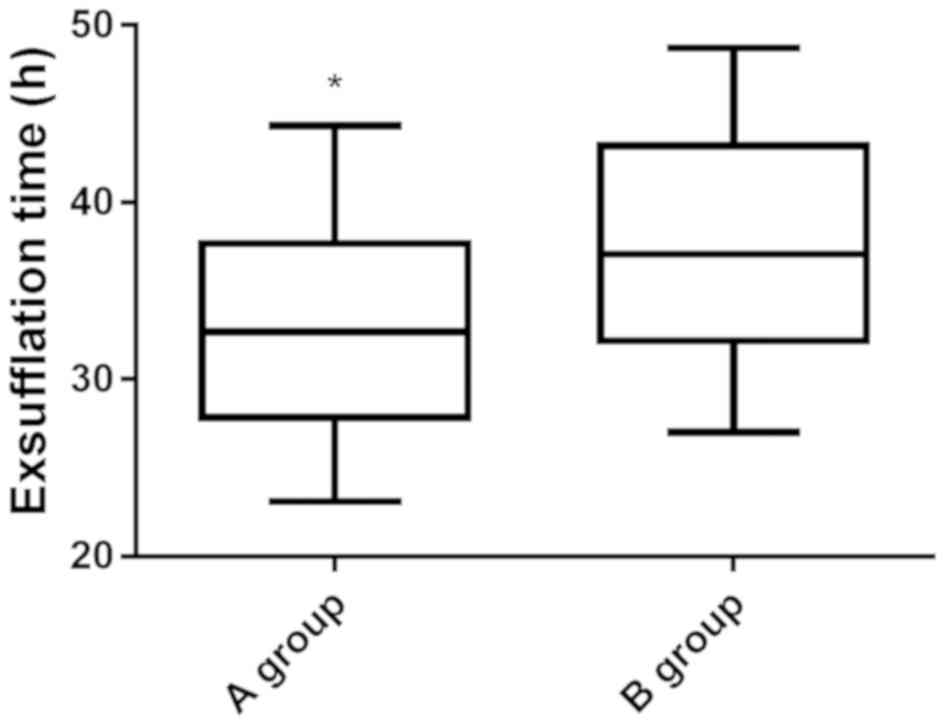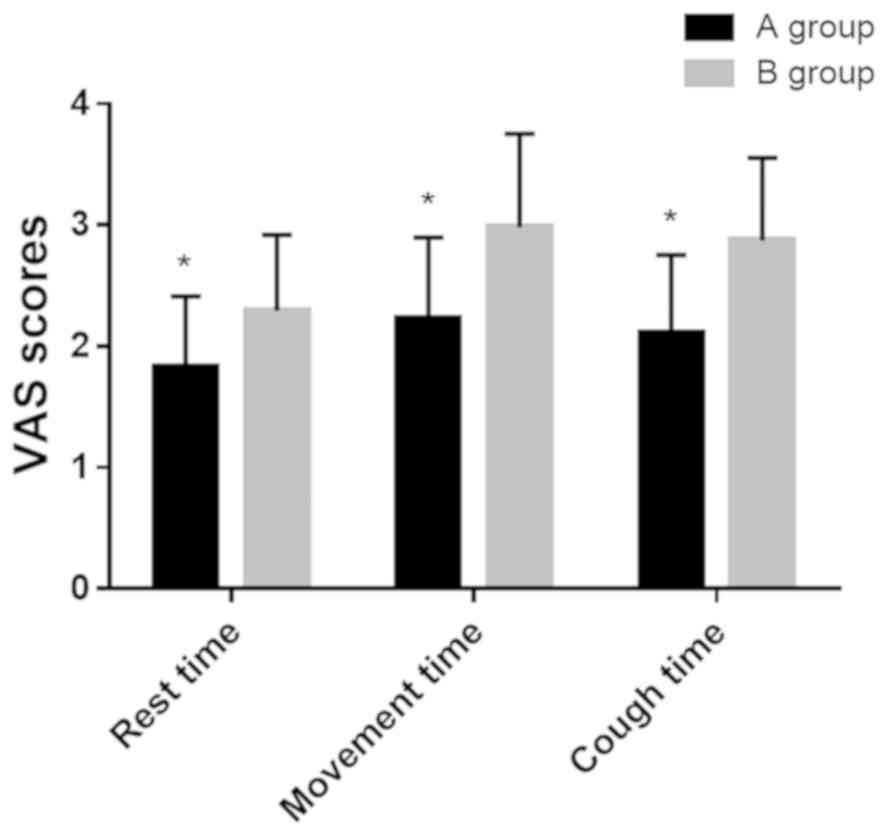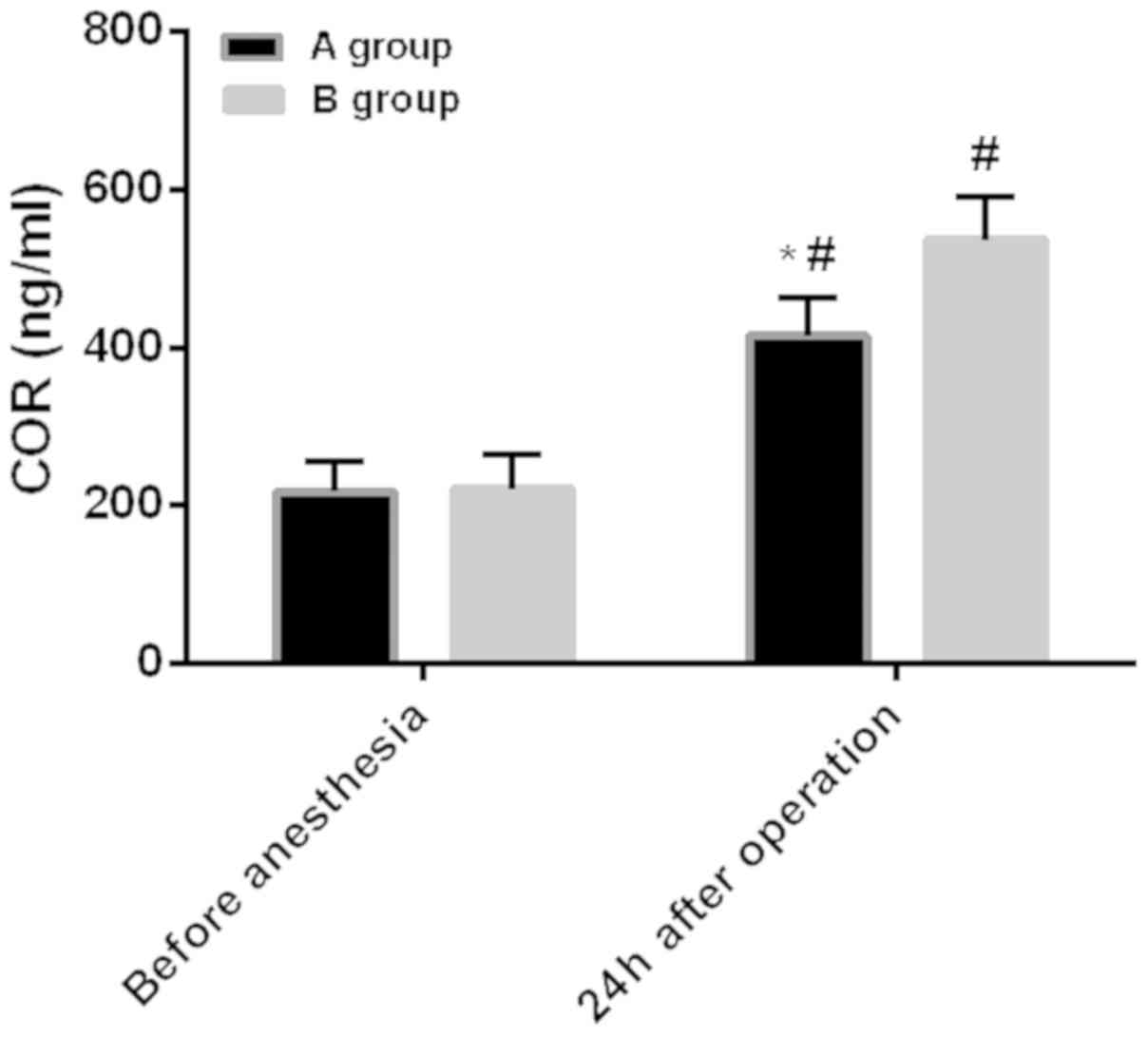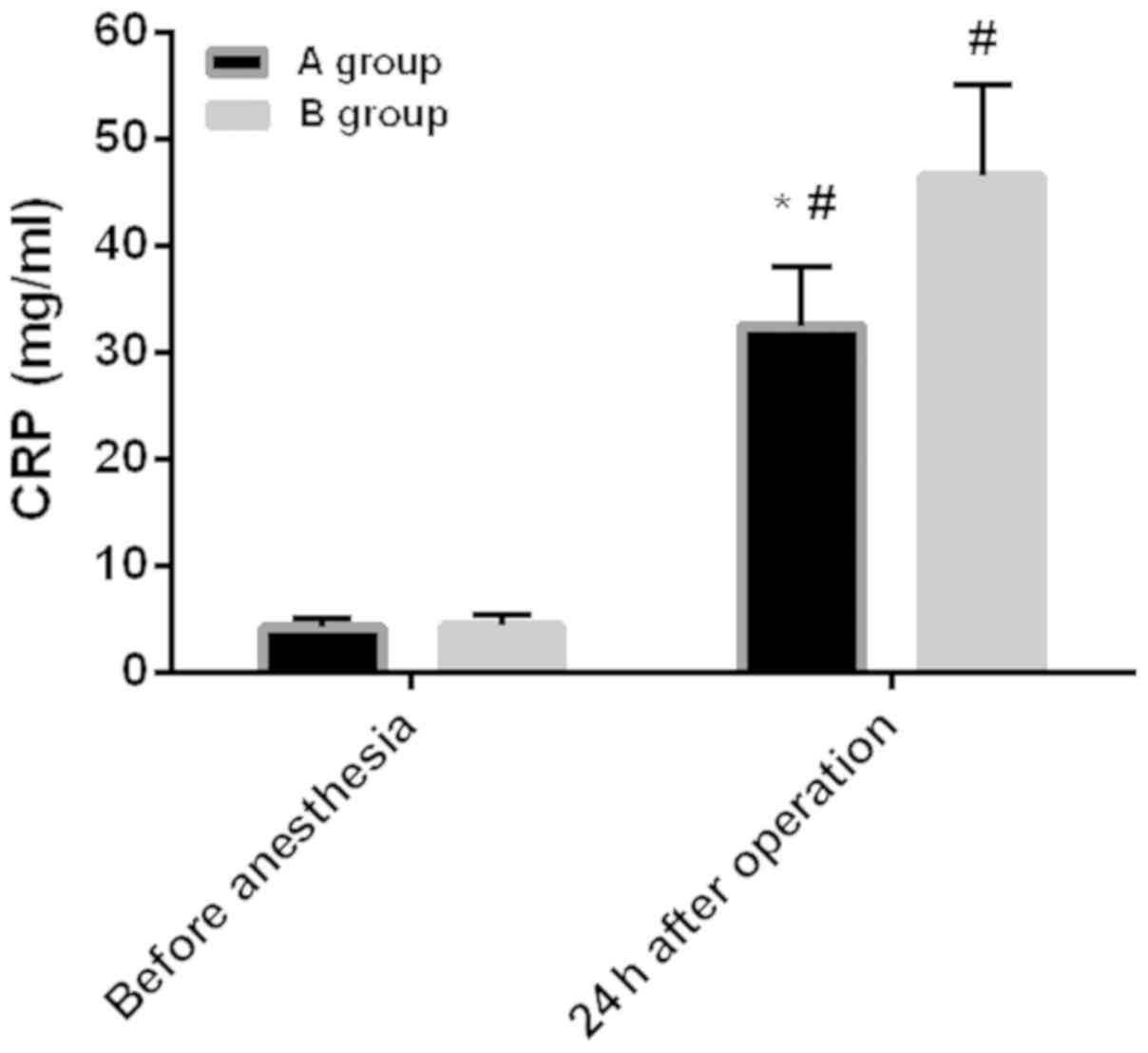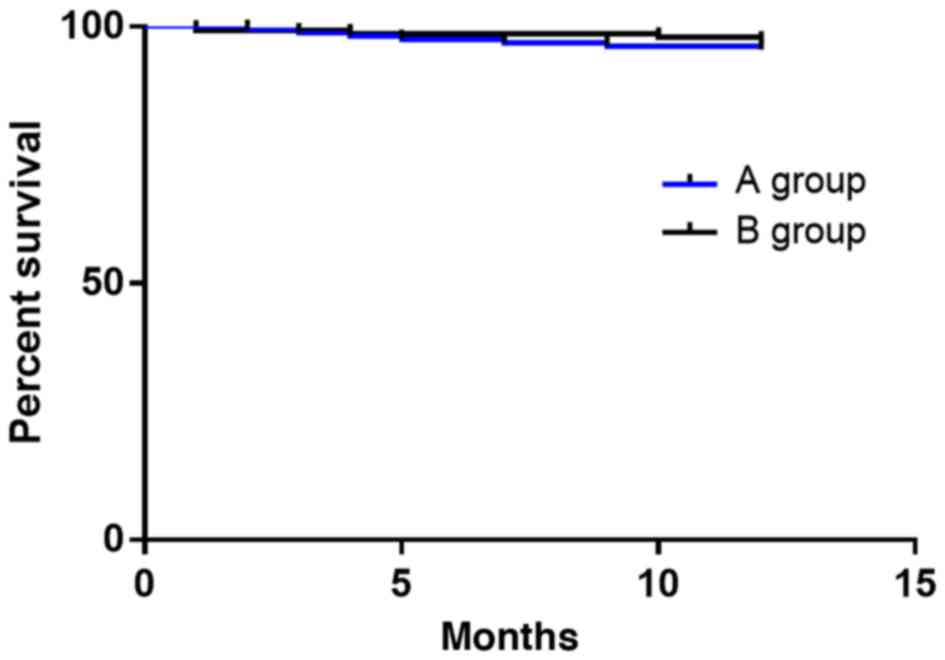|
1
|
Jacobs IJ, Menon U, Ryan A, Gentry-Maharaj
A, Burnell M, Kalsi JK, Amso NN, Apostolidou S, Benjamin E,
Cruickshank D, et al: Ovarian cancer screening and mortality in the
UK Collaborative Trial of Ovarian Cancer Screening (UKCTOCS): A
randomised controlled trial. Lancet. 387:945–956. 2016. View Article : Google Scholar : PubMed/NCBI
|
|
2
|
Ginestra A, Miceli D, Dolo V, Romano FM
and Vittorelli ML: Membrane vesicles in ovarian cancer fluids: A
new potential marker. Anticancer Res. 19:3439–3445. 1999.PubMed/NCBI
|
|
3
|
Yuan X, Zhang J, Li D, Mao Y, Mo F, Du W
and Ma X: Prognostic significance of tumor-associated macrophages
in ovarian cancer: A meta-analysis. Gynecol Oncol. 147:181–187.
2017. View Article : Google Scholar : PubMed/NCBI
|
|
4
|
Zhang H, Liu T, Zhang Z, Payne SH, Zhang
B, McDermott JE, Zhou JY, Petyuk VA, Chen L, Ray D, et al CPTAC
Investigators, : Integrated proteogenomic characterization of human
high-grade serous ovarian cancer. Cell. 166:755–765. 2016.
View Article : Google Scholar : PubMed/NCBI
|
|
5
|
Zhang W, Liu R, Tang C, Xi Q, Lu S, Chen
W, Zhu L, Cheng J, Chen Y, Wang W, et al: PFTK1 regulates cell
proliferation, migration and invasion in epithelial ovarian cancer.
Int J Biol Macromol. 85:405–416. 2016. View Article : Google Scholar : PubMed/NCBI
|
|
6
|
Xuan W, Zhao H, Hankin J, Chen L, Yao S
and Ma D: Local anesthetic bupivacaine induced ovarian and prostate
cancer apoptotic cell death and underlying mechanisms in vitro. Sci
Rep. 6:262772016. View Article : Google Scholar : PubMed/NCBI
|
|
7
|
Gottschalk A and Poepping DM: Epidural
analgesia in combination with general anesthesia. Anasthesiol
Intensivmed Notfallmed Schmerzther. 50:484–493; quiz 494–495.
2015.(In German). PubMed/NCBI
|
|
8
|
Xing CY, Wu MY and Fan HP: Effects of
different anesthetic and analgesic protocols on cellular immune
function and stress hormone level in patients undergoing lobectomy
for esophagus cancer. Nan Fang Yi Ke Da Xue Xue Bao. 30:284–287.
2010.(In Chinese). PubMed/NCBI
|
|
9
|
Davidson AJ, Disma N, de Graaff JC,
Withington DE, Dorris L, Bell G, Stargatt R, Bellinger DC, Schuster
T, Arnup SJ, et al GAS consortium, : Neurodevelopmental outcome at
2 years of age after general anaesthesia and awake-regional
anaesthesia in infancy (GAS): An international multicentre,
randomised controlled trial. Lancet. 387:239–250. 2016. View Article : Google Scholar : PubMed/NCBI
|
|
10
|
Sun LS, Li G, Miller TL, Salorio C, Byrne
MW, Bellinger DC, Ing C, Park R, Radcliffe J, Hays SR, et al:
Association between a single general anesthesia exposure before age
36 months and neurocognitive outcomes in later childhood. JAMA.
315:2312–2320. 2016. View Article : Google Scholar : PubMed/NCBI
|
|
11
|
Green SM, Rothrock SG, Harris T, Hopkins
GA, Garrett W and Sherwin T: Intravenous ketamine for pediatric
sedation in the emergency department: Safety profile with 156
cases. Acad Emerg Med. 5:971–976. 1998. View Article : Google Scholar : PubMed/NCBI
|
|
12
|
Nie Y, Liu Y, Luo Q and Huang S: Effect of
dexmedetomidine combined with sufentanil for post-caesarean section
intravenous analgesia: A randomised, placebo-controlled study. Eur
J Anaesthesiol. 31:197–203. 2014. View Article : Google Scholar : PubMed/NCBI
|
|
13
|
Weng M, Chen W, Hou W, Li L, Ding M and
Miao C: The effect of neuraxial anesthesia on cancer recurrence and
survival after cancer surgery: An updated meta-analysis.
Oncotarget. 7:15262–15273. 2016. View Article : Google Scholar : PubMed/NCBI
|
|
14
|
Li S: Effect of different surgical
treatment on immune function of patients with benign ovarian tumor.
J Clin Med Practice. 21:93–96. 2017.(In Chinese).
|
|
15
|
Lindholm ML, Granath F, Eriksson LI and
Sandin R: Malignant disease within 5 years after surgery in
relation to duration of sevoflurane anesthesia and time with
bispectral index under 45. Anesth Analg. 113:778–783. 2011.
View Article : Google Scholar : PubMed/NCBI
|
|
16
|
Garnett RL, MacIntyre A, Lindsay P, Barber
GG, Cole CW, Hajjar G, McPhail NV, Ruddy TD, Stark R and Boisvert
D: Perioperative ischaemia in aortic surgery: Combined
epidural/general anaesthesia and epidural analgesia vs general
anaesthesia and i.v. analgesia. Can J Anaesth. 43:769–777. 1996.
View Article : Google Scholar : PubMed/NCBI
|
|
17
|
Claus EB, Schildkraut JM, Thompson WD and
Risch NJ: The genetic attributable risk of breast and ovarian
cancer. Cancer. 77:2318–2324. 1996. View Article : Google Scholar : PubMed/NCBI
|
|
18
|
Yhim HY, Jang MJ, Bang SM, Kim KH, Kim YK,
Nam SH, Bae SH, Kim SH, Mun YC, Kim I, et al: Incidence of venous
thromboembolism following major surgery in Korea: From the Health
Insurance Review and Assessment Service database. J Thromb Haemost.
12:1035–1043. 2014. View Article : Google Scholar : PubMed/NCBI
|
|
19
|
Parat MO: Morphine and metastasis: From
bench to bedside. In: Morphine and Metastasis. Springer.
(Dordrecht). 1–13. 2013.
|
|
20
|
Iwasaki M, Zhao H, Jaffer T, Unwith S,
Benzonana L, Lian Q, Sakamoto A and Ma D: Volatile anaesthetics
enhance the metastasis related cellular sign alling including CXCR2
of ovarian cancer cells. Oncotarget. 7:26042–26056. 2016.
View Article : Google Scholar : PubMed/NCBI
|
|
21
|
Panaretou V, Siafaka I, Theodorou D,
Manouras A, Seretis C, Gourgiotis S, Katsaragakis S, Sigala F,
Zografos G and Filis K: Combined general-epidural anesthesia with
continuous postoperative epidural analgesia preserves sigmoid colon
perfusion in elective infrarenal aortic aneurysm repair. Saudi J
Anaesth. 6:373–379. 2012. View Article : Google Scholar : PubMed/NCBI
|
|
22
|
Rom O and Reznick AZ: The stress reaction:
A historical perspective. Adv Exp Med Biol. 905:1–4. 2016.
View Article : Google Scholar : PubMed/NCBI
|
|
23
|
Billing AM, Fack F, Renaut J, Olinger CM,
Schote AB, Turner JD and Muller CP: Proteomic analysis of the
cortisol-mediated stress response in THP-1 monocytes using DIGE
technology. J Mass Spectrom. 42:1433–1444. 2007. View Article : Google Scholar : PubMed/NCBI
|
|
24
|
Thom SR: Oxidative stress is fundamental
to hyperbaric oxygen therapy. J Appl Physiol (1985). 106:988–995.
2009. View Article : Google Scholar : PubMed/NCBI
|
|
25
|
Shamsdin SA, Anvar M and Mehrabani D: The
effect of exam stress on serum IL-6, cortisol, CRP and IgE levels.
Iran Red Crescent Med J. 12:484–488. 2010.
|
|
26
|
Sendasgupta C, Makhija N, Kiran U,
Choudhary SK, Lakshmy R and Das SN: Caudal epidural sufentanil and
bupivacaine decreases stress response in paediatric cardiac
surgery. Ann Card Anaesth. 12:27–33. 2009. View Article : Google Scholar : PubMed/NCBI
|
|
27
|
Christopherson R, James KE, Tableman M,
Marshall P and Johnson FE: Long-term survival after colon cancer
surgery: A variation associated with choice of anesthesia. Anesth
Analg. 107:325–332. 2008. View Article : Google Scholar : PubMed/NCBI
|
|
28
|
Moslemi F, Rasooli S, Baybordi A and
Golzari SE: A comparison of patient controlled epidural analgesia
with intravenous patient controlled analgesia for postoperative
pain management after major gynecologic oncologic surgeries: A
randomized controlled clinical trial. Anesth Pain Med.
5:e295402015. View Article : Google Scholar : PubMed/NCBI
|
|
29
|
Han XR, Wen X, Li YY, Fan SH, Zhang ZF, Li
H, Sun XF, Geng GQ, Sun S, Huang SQ, et al: Effect of different
anesthetic methods on cellular immune functioning and the prognosis
of patients with ovarian cancer undergoing oophorectomy. Biosci
Rep. 37(pii): BSR201709152017. View Article : Google Scholar : PubMed/NCBI
|















